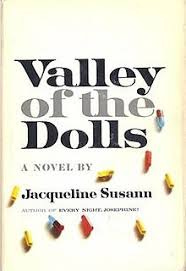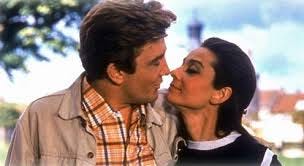Louis B. Mayer famously said, “If you want to send a message, write a telegram.” His comment is a testament to the staying power of a pithy quote. Movies, and stories in general, send messages whether intended or not. Those messages are powerful enough to form the emotional framework and bedrock of our lives.
Before we ever experience the world independently, our heads are filled with stories about what awaits us. The first book that captivated me as a reader was Nancy Drew. I tore through her books, reading one a day. Once I depleted the series, I decided to write my own Nancy Drew-type story. My father encouraged me with a clipboard and a pad of paper. I eagerly began with a title, “The Mystery of the Washing Machine.” I’ve since copyrighted the title to make sure nobody steals it. It’s not often you hit on such a succinct and memorable title.
I dove into writing my story. A page or two into it, I realized I needed a mystery. Putting the word “mystery” in the title wasn’t enough to make it one. I put down the clipboard and never picked it up again. Despite my love of Nancy Drew, reading adult mysteries has never appealed to me. I love watching mysteries, especially British crime dramas. Not the “cozy” genre ones. I dislike those. Americans who don’t travel but watch those mysteries probably think Oxford and Cambridge are among the most dangerous places on Earth! The idea of a “cozy” crime strikes me as bizarre. Given how sensitive we are about death, I’m amazed at how many people watch them and shrug off the crime itself. The victim(s) is virtually superfluous in those stories and rarely elicit emotional reactions from viewers/readers. If I’m watching a crime drama, I expect it to be dark and gritty. Somebody showing up on a bicycle to investigate a grisly murder is inconsistent with, and akin to fantasy, another genre I dislike.
When I hear people discuss crime fiction, they often follow up with the comment, “It’s my escape.” That’s the problem I have with reading crime fiction. It doesn’t feel like an escape because the instinctual pull is to try and work out who the bad guy is. I’d rather spend my time exploring the emotional and psychological landscape of a character.
Post-Nancy Drew, I gravitated toward schlock. “Valley of the Dolls was my favorite book in my late teens. They became iconic for many reasons, none having to do with the quality of the writing. The first book by Jacqueline Sussan, came out in 1966 and sold more copies than any other book that year – and remains to this day, one of the best-selling books of all time. Set in New York and Hollywood, it tells the story of three innocent young women, looking for happiness in all the wrong places. It’s chock full of cliches, camp and snarky. The alleged prototypes for the three were Judy Garland, Marilyn Monroe, and Ethel Merman.
Nothing could’ve been further from my life than what was depicted in those tawdry pages. I was a Jewish suburban Detroit teenager whose ambition was to marry a handsome, wealthy doctor/lawyer and live a glamorous life as depicted in movies in New York or Hollywood. My experience with alcohol and liquor was via movies. Nobody in my life ever had a drink of any alcohol in their homes. The only thing I knew about alcohol came from the Days of Wine and Roses. Consequently, I never had a serious adult drink until after 9/11! I also learned about drugs from movies, but “Valley of the Dolls” introduced me to a new concept, “recreational drugs” aka dolls.
I inhaled the 442-page saga with a voice in my head screaming “you can write this.” Contrast that to my favorite book, “A Tale of Two Cities.” In my most deluded fantasies, I never thought I might be the next Dickens. For the second time in a decade, I picked up a pen and clipboard, probably the same clipboard from my failed decade-old attempt and had a go. A few pages into it, I realized I had nothing to write about. Exploring my relationship to writing in this newsletter has made me aware of its gravitational pull on me since childhood.
To continue this LIFE-CHANGING, AWE-INSPIRING post, please become a paid subscriber.
I recently watched the limited series about Truman Capote and his Swans, the gaggle of “high society” women who surrounded him. The next day, an article popped up on my phone (thx to data tracking) about Babe Paley, Numero Uno Swan. Before the series, I knew nothing about her other than she was Bill Paley’s wife and Capote’s BFF. The series aroused my curiosity, so I read the article. I came away wondering what kind of stories Babe grew up with. While I may prefer stories like “The Age of Innocence” or “The Remains of the Day” or tales of unrequited love, in real life, I want “An Affair to Remember,” not “Anna Karenina.”
Marrying for money, political expediency, or anything other than what we commonly think of as romantic love is something, even now, as a seventy-five-year-old woman, I can’t get my head around. Didn’t Babe go to the movies? Since the only thing absent from her life was love, I’d think it would be the one thing she’d be desperate for. Or maybe she and others prefer a narrative they’re most familiar with.
In my 20s, An Unmarried Woman gave women freedom from philandering husbands and allowed them to live happy, independent lives. It’s easy for new generations to see a movie like this as “preachy” feminism; as one viewer wrote ten years ago, the film, like life, needs to be seen in the context of the times. An Unmarried Woman moved the cultural socio-political needle.
The message that came through the loudest, or the one I chose to embrace, was “happily ever after.” I questioned everything from communism to JFK conspiracy theories, but never questioned the purity of romantic love as depicted in literature, film, and television. I divined my future from movies like Breakfast at Tiffany’s, Barefoot in the Park, and Love with the Proper Stranger. When I saw Two for the Road, it completed my romantic relationship tableau, despite it being far from a typical love story.
“Donen made a film for adults – and it remains one of the best of its generation or time.”
Directed by Stanley Donen in 1967, the film stars Audrey Hepburn and Albert Finney. Their chemistry burns up the screen. It’s the first American film made in the French New Wave style and met with lots of early resistance from distributors. It was the first non-linear story I’d ever seen. My girlfriends disliked the film because they couldn’t follow the storyline. I loved it. The depictions of their evolving relationship are brilliantly juxtaposed and paint such a vibrant picture of a twelve-year marriage throughout the trips through the French countryside.
I never looked at travel or romance in the same way again. For my own wedding ceremony, I chose the music from the film, which nobody but me—and, of course, Jim-- had ever heard of.
If there’s a downside, and there always is, I became obsessive with travel, devoting countless hours to staying in places reminiscent of those in Two for the Road. Over our 50 years of marriage, Jim and I have watched the film many times. It’s remarkable how adult and contemporary it remains. Film Comment made the same observation when they revisited it a few years ago. “Donen made a film for adults – and it remains one of the best of its generation or time.” I’d argue of any generation. This summer Jim and I will take to the road to celebrate the passage of time and our ability to weather it together. Thanks to “Two for the Road” for the inspiration!






